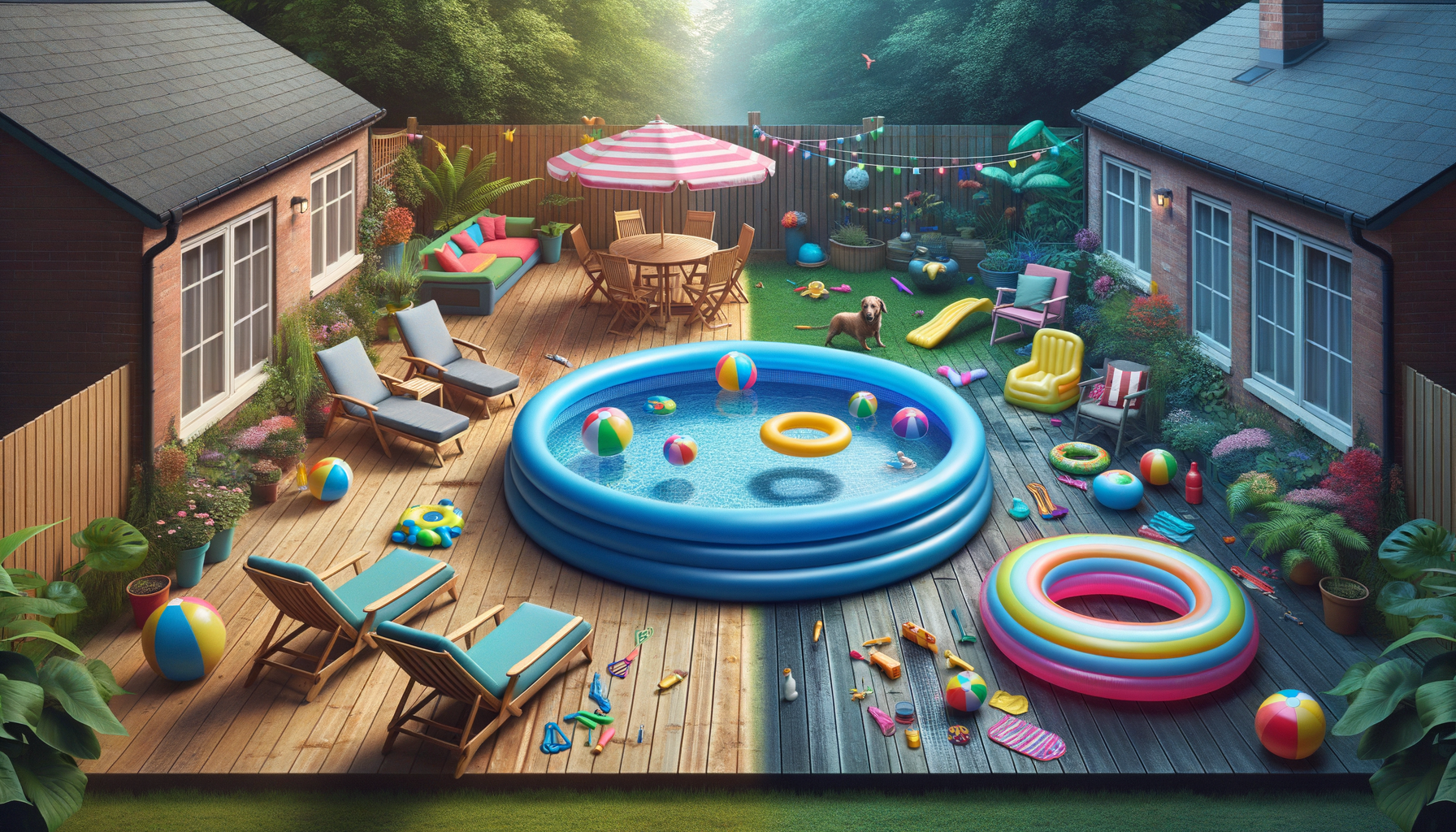
Transform Your Outdoor Space with an Inflatable Pool
Introduction to Inflatable Pools
Inflatable pools have become a popular choice for families looking to enjoy the benefits of a swimming pool without the high costs and permanent installation. These versatile pools can transform any backyard into a refreshing oasis, offering a convenient and cost-effective way to beat the heat. With their easy setup and portability, inflatable pools are perfect for those who want to enjoy a swim without the commitment of a traditional pool.
Designed for convenience, inflatable pools are typically made from durable materials that can withstand the elements, making them a practical option for seasonal use. They come in various sizes and shapes, catering to both children and adults. Whether you’re looking to lounge in the sun or provide a safe place for kids to splash around, an inflatable pool can be a great addition to your outdoor space.
Benefits of Inflatable Pools
One of the primary benefits of inflatable pools is their affordability. Compared to in-ground pools, inflatable options are significantly cheaper, making them accessible to a wider range of households. Additionally, they require minimal maintenance, saving both time and money in the long run.
Another advantage is their portability. Inflatable pools can be easily deflated and stored when not in use, making them ideal for those with limited space or who rent their homes. Their lightweight design allows for easy relocation, so you can choose the perfect spot in your yard for each use.
- Cost-effective compared to traditional pools
- Minimal maintenance required
- Portable and easy to store
- Variety of sizes and designs available
Choosing the Right Inflatable Pool
When selecting an inflatable pool, it’s essential to consider factors such as size, shape, and material. The size of the pool should match the available space in your yard and the number of users. For families with young children, a smaller, shallow pool may be sufficient, while larger families or those who wish to swim laps might opt for a more spacious design.
The shape of the pool can also impact its functionality. Rectangular pools are ideal for swimming and playing games, while round or oval designs may be better suited for lounging and relaxation. It’s important to choose a pool made from high-quality materials that can withstand frequent use and exposure to sunlight.
- Consider the size and shape based on available space and intended use
- Opt for durable materials for longevity
- Check for safety features, especially for children
Setting Up Your Inflatable Pool
Setting up an inflatable pool is a straightforward process that can be completed in a few simple steps. First, choose a flat, level surface in your yard to ensure the pool remains stable. It’s advisable to place a ground cloth or tarp underneath to protect the pool’s base from sharp objects.
Inflate the pool using an electric pump, which can save time and effort compared to manual inflation. Once inflated, fill the pool with water, taking care not to exceed the recommended water level. Regularly check the water’s chemical balance to maintain cleanliness and safety.
- Select a flat, level surface for stability
- Use a ground cloth to protect the pool’s base
- Inflate with an electric pump for efficiency
- Monitor water quality regularly
Maintaining Your Inflatable Pool
Proper maintenance is key to ensuring the longevity and safety of your inflatable pool. Regularly clean the pool’s surface and remove any debris to prevent damage. It’s also important to check for leaks and repair them promptly using a patch kit.
Maintaining the water quality is crucial for a pleasant swimming experience. Use appropriate chemicals to balance the pH levels and prevent the growth of algae and bacteria. Cover the pool when not in use to keep out dirt and debris, and drain it completely at the end of the season to prevent mold and mildew.
- Regularly clean and inspect the pool for damage
- Use chemicals to maintain water quality
- Cover the pool to keep it clean
- Drain and store properly at the end of the season


